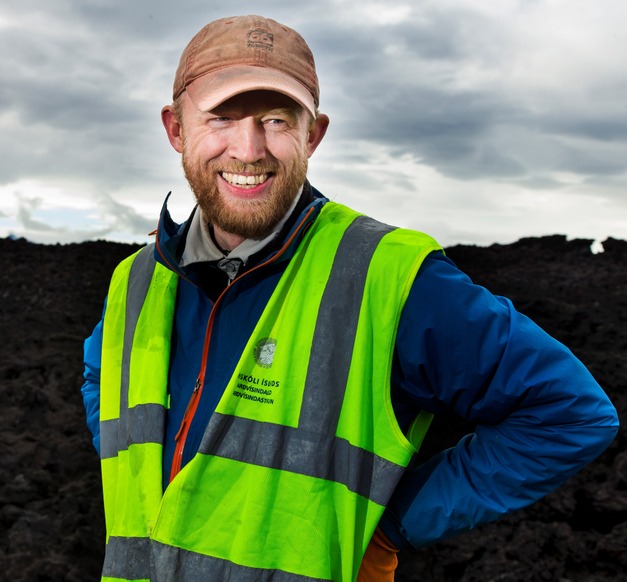Morten S. Riishuus, Specialist at the Nordic Volcanological Center and the Institute of Earth Sciences at the University of Iceland
“I was here in Holuhraun Lava monitoring and researching for a total of nine weeks at the height of the eruption. During that time I walked more than 20 kilometres on fresh lava. Walking on new lava is the most difficult task I have ever faced, and my shoes are completely ruined!”
So says the Danish scientist, Morten S. Riishuus, and laughs when we meet him in the mild weather of late summer in Holuhraun lava. He is gathering supplemental data to what has already been collected during the eruption itself. Riishuus shows us his shoes to prove how hard the lava was on them. “I will keep them as a memento,” he adds with a chuckle.
Morten S. Riishuus
“It is our duty to work on research to improve our understanding of this type of eruption and to explore their effect on the environment.”

“Each eruption is a new lesson,” he says, “but the events here in the Bárðarbunga Volcano were unique, not only on a geological scale but also during a geologist’s life time. An intense fissure eruption lasted for six months, resulting in the largest eruption in Iceland since the Laki eruption over 200 years ago.”
In addition to large scale emissions of poisoned sulphur-dioxide, lava flow from the Holuhraun eruption was around 1.6 km3 equivalent to half the volume of Lake Þingvallavatn. Looking over the pitch black lava field with Morten Riishuus, half a year after the eruption ended, it is clear that this was a massive natural catastrophe – the lava field covers an area similar to Lake Þingvallavatn in size.
According to Riishuus scientists observed Holuhraun during the eruption, carrying out various measurements and taking samples. Additionally, they assisted various research teams that visited the area.
“It is our duty to work on research to improve our understanding of this type of eruption and to explore their effect on the environment,” says Riishuus.
A substantial part of Riishuus’s scientific work revolves around volcanic activity and plate tectonics in Iceland during geological time. He points to the million year old strata that can be seen in the mountains, in the west, north and east of Iceland.
“These strata show enormous lava eruptions in prehistoric times. Even though the eruption in Holuhraun is much smaller than the prehistoric basalt eruptions, the large flat sandy area where the eruption occurred is more similar to the ancient conditions than any other contemporary eruption. Therefore, we can use our knowledge of Holuhraun to interpret what we see in the old strata. Thus we can recreate geological history and know more about pre-historic volcanic activity.”


